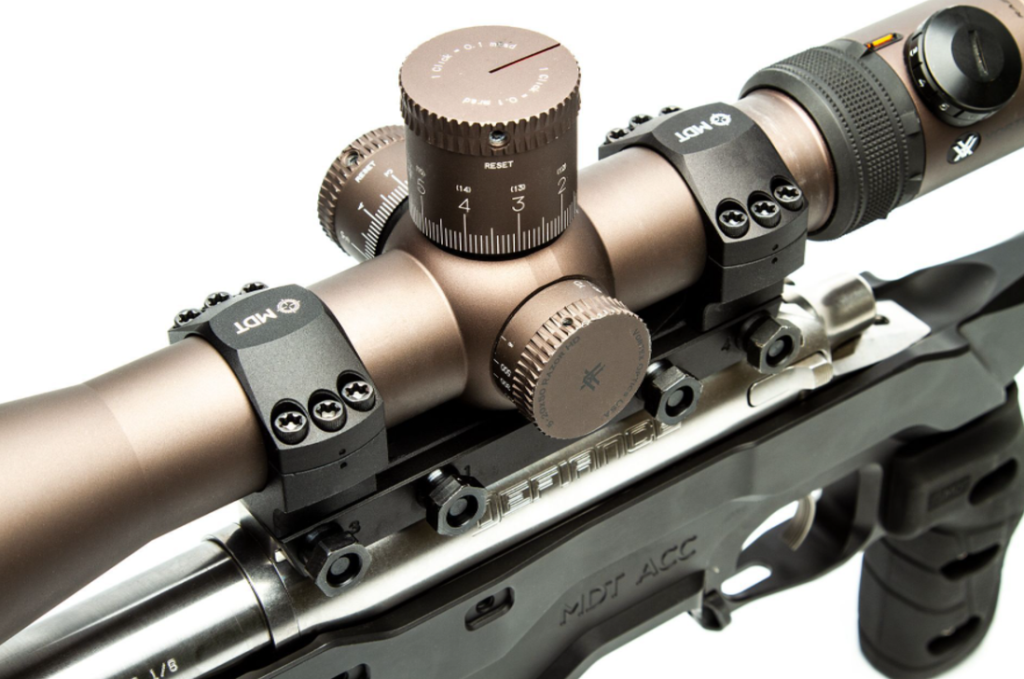When setting up a rifle for precision shooting or hunting, one of the most important components you’ll choose is the scope mounting system. It may seem simple on the surface — after all, it’s just what holds the scope in place, right? But the difference between 2-piece scope rings and a one-piece unimount can have a big impact on your rifle’s performance, accuracy, and adaptability.
In this blog, we’ll break down the differences between these two popular mounting options, weigh the pros and cons of each, and help you decide which is best for your setup.
What Are 2-Piece Scope Rings?
2-piece scope rings are a traditional and widely-used mounting system. As the name suggests, these come as two separate rings that are individually mounted to a rifle’s rail or receiver. They are usually mounted directly to a Picatinny or Weaver-style base, or in some cases, to dovetail mounts or integral receivers.
Advantages of 2-Piece Rings:
- Lighter weight: Two individual rings typically weigh less than a full-length mount, which is useful for hunters or anyone concerned about total rifle weight.
- Better access to the action: Since the space between the rings is open, it provides better access for loading or cleaning — especially important on bolt-action rifles.
- Versatility: Rings can be spaced to accommodate different scope tube lengths and configurations.
- More traditional fit: Many hunting rifles and classic builds are designed with two-piece rings in mind, and they maintain a clean, low-profile appearance.
Disadvantages of 2-Piece Rings:
- More prone to misalignment: Because each ring is installed separately, there’s a greater chance of slight misalignment, which can lead to scope stress or improper zeroing.
- Fewer integrated features: Unlike some modern mounts, 2-piece rings rarely include built-in forward cant (like 20 MOA), bubble levels, or recoil lugs.
- Installation requires more care: Aligning and torqueing each ring consistently is key for best performance and scope integrity.
What is a One-Piece Unimount?
A one-piece unimount is a solid, single-piece scope mount that integrates both rings into a single rigid structure. It’s typically made of aluminium and attaches as one unit to a Picatinny or MIL-STD 1913 rail.
Advantages of a Unimount:
- Built-in alignment: Since the rings are part of the same structure, they’re automatically aligned. This reduces the chance of scope tube stress or misalignment.
- Increased strength and rigidity: A single piece of material distributes forces more evenly and handles recoil more reliably, making it a favourite for tactical or precision shooting.
- Easier installation: Just one mounting operation instead of two — quicker, simpler, and often with built-in torque specs.
- Often includes additional features: Many unimounts have built-in cant (e.g. 20 MOA) for extended elevation, integral recoil lugs, or bubble levels to improve long-range accuracy.
Disadvantages of a Unimount:
- Heavier: A one-piece mount will usually weigh more than two separate rings, especially when made of steel or with extended features.
- Bulky: The solid structure can make the rifle more top-heavy and may interfere with certain bolt actions or ejection ports.
- Limited access: Depending on design, the mount may partially obstruct access to the action or chamber — a potential issue for bolt-actions or single-shots.
Which is Best?
The answer depends largely on your shooting style, rifle platform, and priorities. Here’s a breakdown to help you choose:
Choose 2-Piece Rings if you:
- Are building a lightweight hunting rifle where weight and balance are top priorities.
- Need unobstructed access to the action for top-loading, cleaning, or inspecting your bolt.
- Want a classic aesthetic or are using a traditional bolt-action rifle.
- Prefer a lower profile mount that’s close to the bore axis.
Choose a One-Piece Unimount if you:
- Are into precision shooting, long-range, or competition setups where rigidity and perfect alignment are critical.
- Want a quick and foolproof installation with fewer alignment issues.
- Use an AR-style or chassis rifle where a high mount and integrated cant are common.
- Need extra strength and resistance to heavy recoil or rough use.
Consider Your Scope and Rail, Too
Before committing, make sure your scope tube size (1″, 30mm, 34mm, etc.) and rail system (Picatinny, Weaver, or Dovetail) are compatible with the mount you choose. Some unimounts are platform-specific, while 2-piece rings tend to be more flexible across different rifles and optics.
Also, if your shooting involves long distances (500m+), a one-piece mount with built-in MOA (e.g., 20 MOA) can give you more elevation adjustment — an advantage most 2-piece rings don’t offer out of the box.
Final Thoughts
Both 2-piece scope rings and one-piece unimounts have a place in the world of shooting, and neither is objectively “better” — it all depends on how and where you’re shooting.
- For traditional hunting, go with 2-piece rings — they’re lightweight, sleek, and give you clear access to your action.
- For precision, tactical, or long-range shooting, a unimount is the clear choice — it offers strength, consistency, and features that help deliver rounds on target when it matters most.

